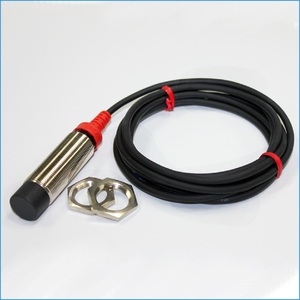Introduction to Automation Direct Proximity Sensors
Automation Direct proximity sensors are essential devices used in various industries for detecting the presence of objects without physical contact. These sensors utilize advanced technology to provide reliable, accurate detection capabilities, making them invaluable for automation processes. Widely recognized for their efficiency and precision, Automation Direct proximity sensors play a crucial role in enhancing operational productivity while minimizing the risk of damage to machinery or components.
Types of Automation Direct Proximity Sensors
Automation Direct offers various types of proximity sensors to meet different application needs:
- Inductive Proximity Sensors: Ideal for detecting metallic objects, these sensors function based on electromagnetic fields and are commonly used in manufacturing and assembly lines.
- Capacitive Proximity Sensors: These sensors are perfect for detecting both metallic and non-metallic objects, including liquids. They work by sensing changes in capacitance caused by nearby objects.
- Photoelectric Sensors: Utilized for long-distance detection, these sensors use light beams to detect the presence of objects, making them suitable for various applications, including packaging and sorting.
- Ultrasonic Proximity Sensors: These rely on sound waves to detect an object’s presence and are ideal for detecting distant objects or in environments where visibility can be compromised.
Applications of Automation Direct Proximity Sensors
Automation Direct proximity sensors are versatile and tailored for numerous applications across diverse industries:
- Manufacturing Automation: Used for controlling machinery, monitoring assembly lines, and preventing bottlenecks in production.
- Material Handling: Essential for object detection in conveyor systems, ensuring smooth and efficient transport of goods.
- Robotics: They are integral in robotics for precise movement control and obstacle detection.
- Building Automation: Useful for occupancy sensing in smart lighting systems, improving energy efficiency in commercial buildings.
Features and Advantages of Automation Direct Proximity Sensors
The standout features of Automation Direct proximity sensors contribute significantly to their advantages:
- Non-Contact Detection: Allows for rapid detection of objects without risking wear and tear or potential damage, ensuring longer sensor lifespan.
- High Speed and Sensitivity: Capable of detecting targets at high speeds, making them ideal for fast-paced applications.
- Durability: Many proximity sensors come with robust housings, designed to withstand harsh environments, including dust, moisture, and temperature variations.
- Easy Integration: Designed for quick installation, they can easily integrate into existing systems, ensuring minimal downtime during installation.
- Cost-Effective: Reduce operational costs through increased efficiency and less need for manual oversight, resulting in significant long-term savings.















































































































































































